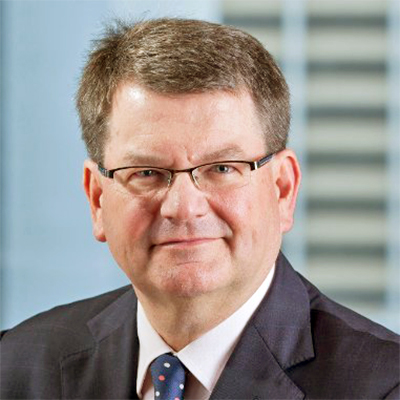WHAT does a business owner and leader have to do to position for a potentially tough 2016 and beyond? It is a question human resources specialist Peter Gwizdalla has been wrestling with, in order to better assist his clients, and he has broken it down into three main focuses.
He urges business leaders to first focus on de-cluttering their businesses and clarifying leadership structures; then getting all business leaders “good at honest, motivating, evidence-based performance conversations”; followed by accelerating staff engagement “using the high impact, low cost strategy of acknowledgement”. 
Mr Gwizdalla today runs his own human resources advisory service to companies large and small and he is building a reputation for not simply problem solving but long term strategies to drive better performance. He has runs on the board with both Hay Group, as state manager, as well as Aurizon.
“Many of my SME (small-to-medium enterprise) clients are prudently concerned about the economic environment and preparing for a tough 2016,” Mr Gwizdalla said. “They’re also keenly aware that it’ll be theirs and their people’s efforts alone meeting challenges around revenue, quality, cost and innovation issues.”
Mr Gwizdalla said they key approach was to work out what ‘people and organisation’ foundations business leaders had to have in place in order to thrive while others struggle.
Top of his list was to “de-clutter, strengthen and clarify your leadership structure”.
“Company size notwithstanding,” he said, “enormous amounts of time and energy are burned when leaders do things such as not passing down to their reports enough of what they require for success, doing work better done – and paid for more cheaply – at lower levels, and having a too narrow focus on short term results at the expense of longer term considerations.
“Do you know how much your leaders might be actually inhibiting the performance of their direct reports?
“If you don’t, you’re not alone,” Mr Gwizdalla said. “Out of hundreds of leaders I’ve interviewed I estimate more than 70 percent are suffering at least one of the above productivity sapping problems.
“The most concerning aspect of these issues is that, because of the systemic nature of leadership in organisations, they automatically create problems for other leaders. For example, the leader that does the work of lower levels, automatically drags down their own leader to do the work they are ignoring.
“Either that, or the work simply does not get done-witness the executive level leader that gets too involved in day to day operational issues instead of looking ahead, anticipating and planning for what the company needs to deal with in the future.”
Mr Gwizdalla said to address such issues, business leaders needed to collect data on the breadth and depth of what every layer of leaders in your organisation thinks they should be contributing.
“Aggregate the data and you’ll soon see the gaps, overlaps and narrowed thinking, especially if you compare them to a practical generic leadership model like Drotter’s Performance Pipeline,” he said.
“From there, educate your leaders about what you have found and how things need to change.”
CLEAR MOTIVATION
Mr Gwizdalla said with effective leadership role clarity, the next phas can begin: “Get your leaders good at honest, motivating, evidence based performance conversations”
“At least once a month, in addition to normal day-to-day work conversations, every leader should be meeting with their reports to discuss overall performance in the whole job,” Mr Gwizdalla said. “The focus needs to be mainly on the future with a collaborative problem-solving approach. Discuss what work is coming up, the obstacles and risks that might be faced in getting it done, how they might be approached and what help is needed, and where improvements could be made.
“Find out what is important to them about the job, how they do it and what they think about their future. Share your own ideas and approaches in a helpful coaching style.”
Mr Gwizdalla said this approach motivates people because it provides information and helpful responsiveness to what is nearly always most important to them – their self interest.
“By the way, if any of your leaders tell you they don’t have the time to do this, they should be deployed back into a technical role, or let go,” Mr Gwizdalla said. “It is the 21st century after all … there is no room for leaders that don’t lead.”
ACKNOWLEDGEMENT WINS
Mr Gwizdalla is a big believer in accelerating staff engagement – and it does not have to be a costly exercise. To the contrary, Mr Gwizdalla said a most effective high impact, low cost strategy could be abased around simple acknowledgement.
would be to simply acknowledge staff
“The research evidence in pretty clear. Praise and acknowledgment are very effective as motivators,” he said. “Let’s be clear though, we’re not talking about the ‘every child is a winner’ brand of praise. Here the most important guidelines for best results.
“First, praise efforts as well as results. The tendency is to notice and reward successful results achieved while overlooking the importance of efforts made.
“In a world where innovation through prudent risk taking and trial and error is becoming increasingly important to success, you need to acknowledge out of the ordinary efforts that ended in failure. You never know, the next effort may be the one that strikes gold,” Mr Gwizdalla said.
“Second, praise personal bests as well as comparative performance. Make sure you notice people who aren’t the stars, but are kicking goals on a personal progress basis.
“Third, acknowledge with specificity and context. Let people know exactly what behavior or result you’re noticing and how it links to your company’s success.”
As an example, he said, “Was it the resilience they showed in working through obstacles? Or perhaps the willingness to spend personal time to get an important job done?”
Mr Gwizdalla said one of the most powerful acknowledgements was to do so at unexpected times in unexpected ways.
“Give someone personal praise early on a Monday morning. Call an impromptu short meeting. Write a thank you card. Buy some flowers for someone’s desk or team area. Shout an unannounced morning tea. Ask people for their opinion on something a little outside their usual area.”
Mr Gwizdalla said this advice should be used by business leaders as a “checklist diagnostic for your own situation”
“Perhaps there’s value in convening a working group of your most senior managers and staff to uncover where the biggest gains are to be made in applying these ideas,” Mr Gwizdalla suggested.
Ends


 How to resolve AdBlock issue?
How to resolve AdBlock issue? 




